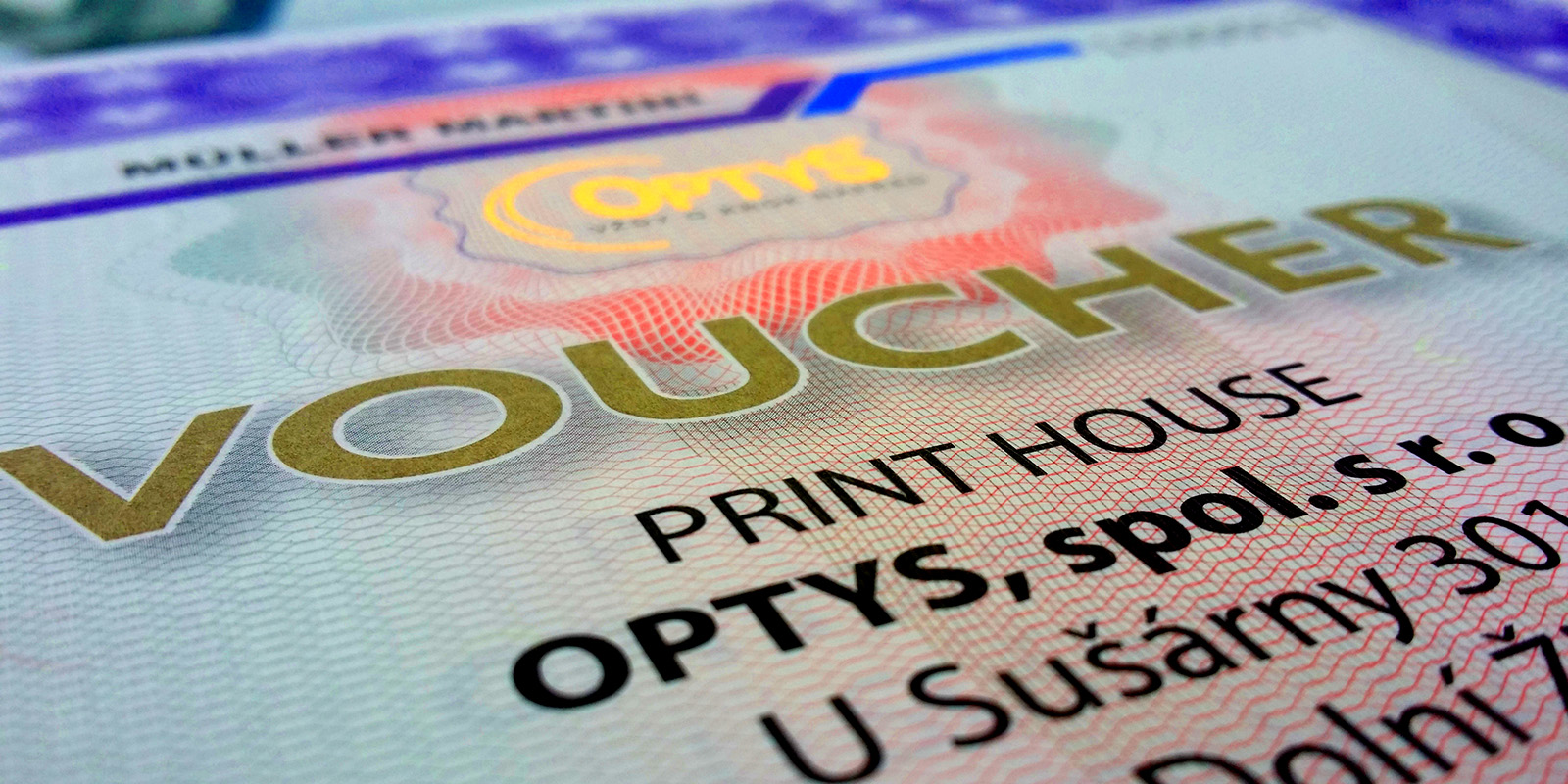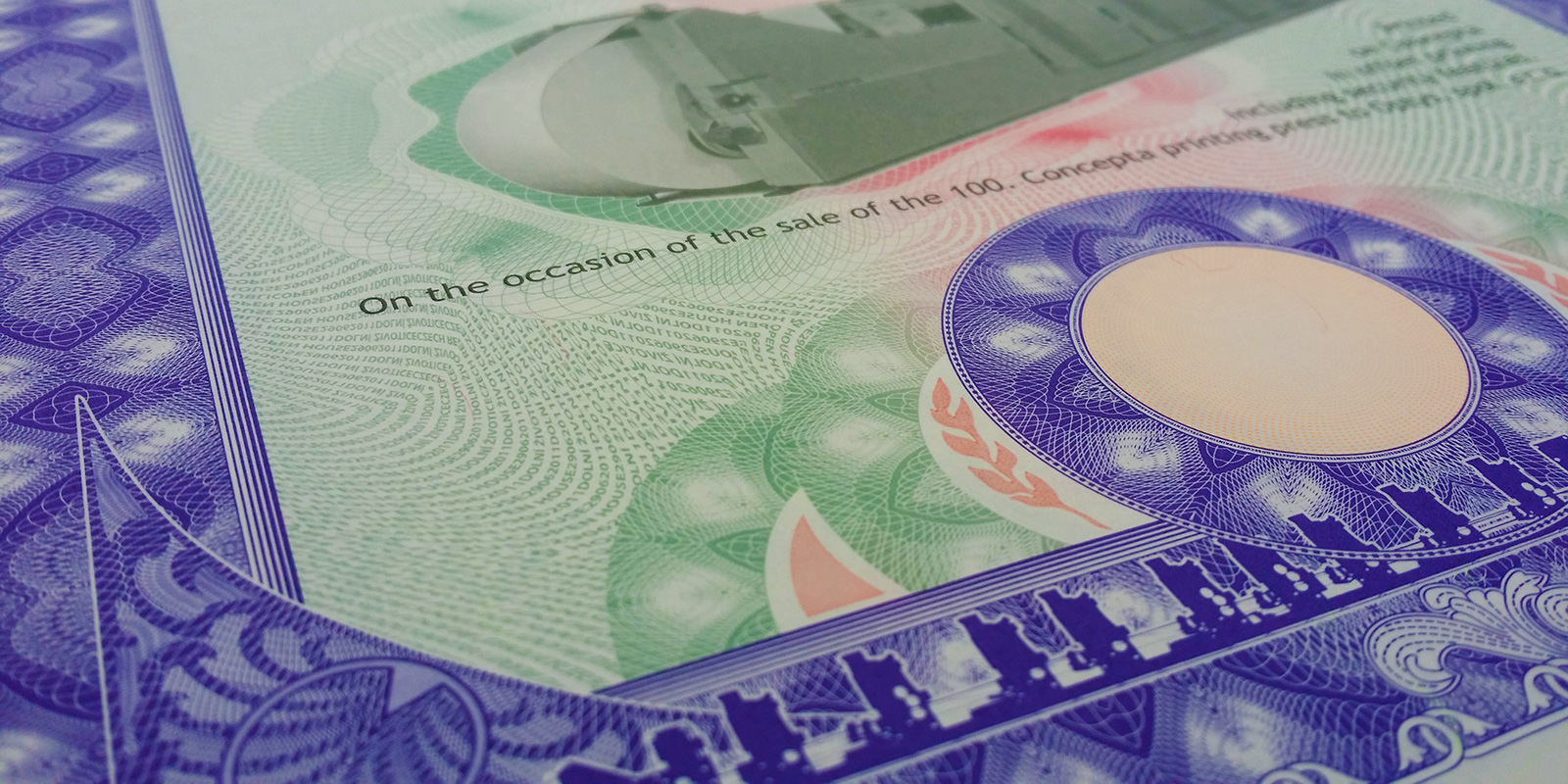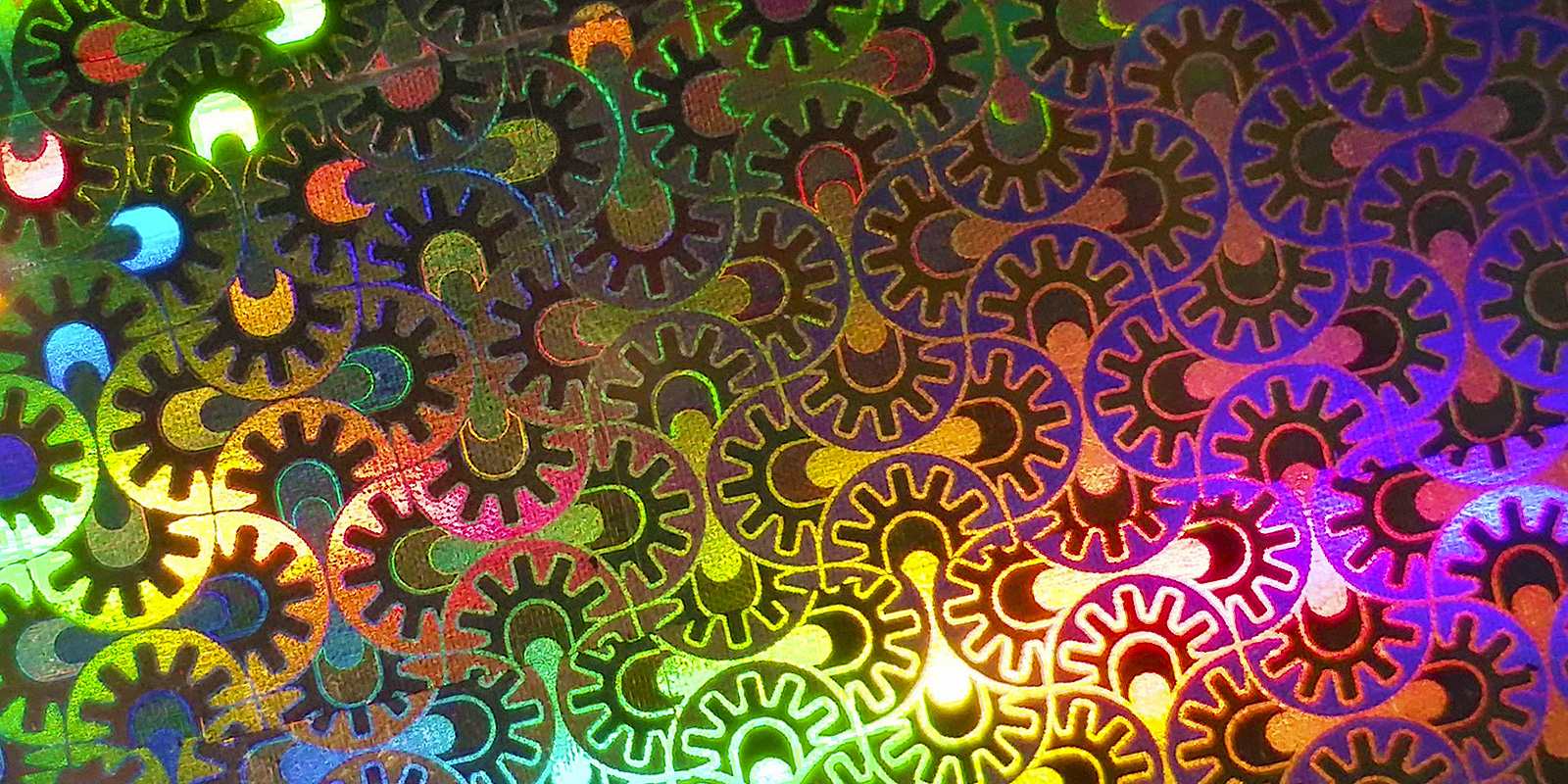Types of security graphics used
Anti-copy / anti-scan raster

Printed security features integrated into background printing such as thin lines or texts to protect against scanning and copying on any commonly used copy-machine.
Rainbow colouring (iris security feature)


This ofset printing protective method is used to secure documents against colour separation or copying.
Microprint

Lines, motifs or texts made up of very small letters or numbers that are barely perceptible to the eye.
Guilloche

Intricate designs consisting of interlaced continuous lines arranged in geometric patterns.
Inspection film raster

When an inspection film is placed on a certain part of graphivs, a graphical element not commonly visible is revealed.
Protective elements contained in the paper or applied on the paper
Fibres

Security fibres in various colours which are mixed into the paper pulp during the paper manufacturing process. They may be metallic, transparent or fluorescent under UV light.
Watermark

A watermark is a picture, text or character motif, which is incorporated into the paper during manufacture by displacement of the paper fibres, leading to a varying thickness of the paper.
Micro-perforation

The material is mechanically perforated with one or more cuts (or shape perforations) by which the required shape is reached.
Hologram


The required motif achieved by the shape of block on the matrix is embossed into the material. After embossing a relief impression appears partly raised above the material surface.
Embossing (blind blocking)


The required motif achieved by the shape of block on the matrix is embossed into the material. After embossing a relief impression appears partly raised above the material surface.
Special printing colours used
Fluorescent ink

Ink which contains fluorescent pigments. Thanks to these the ink fluoresces under UV light, and may be visible/invisible under daylight.
Thermochromic ink


Special ink that changes colour in a reversible way at different temperatures.
Reagent ink

Security inks are available in different shades, are solvent sensitive, do react by bleeding into/through substrate. Hereby it detects counterfeiting by solvents; mainly in case of marked transport tickets.



